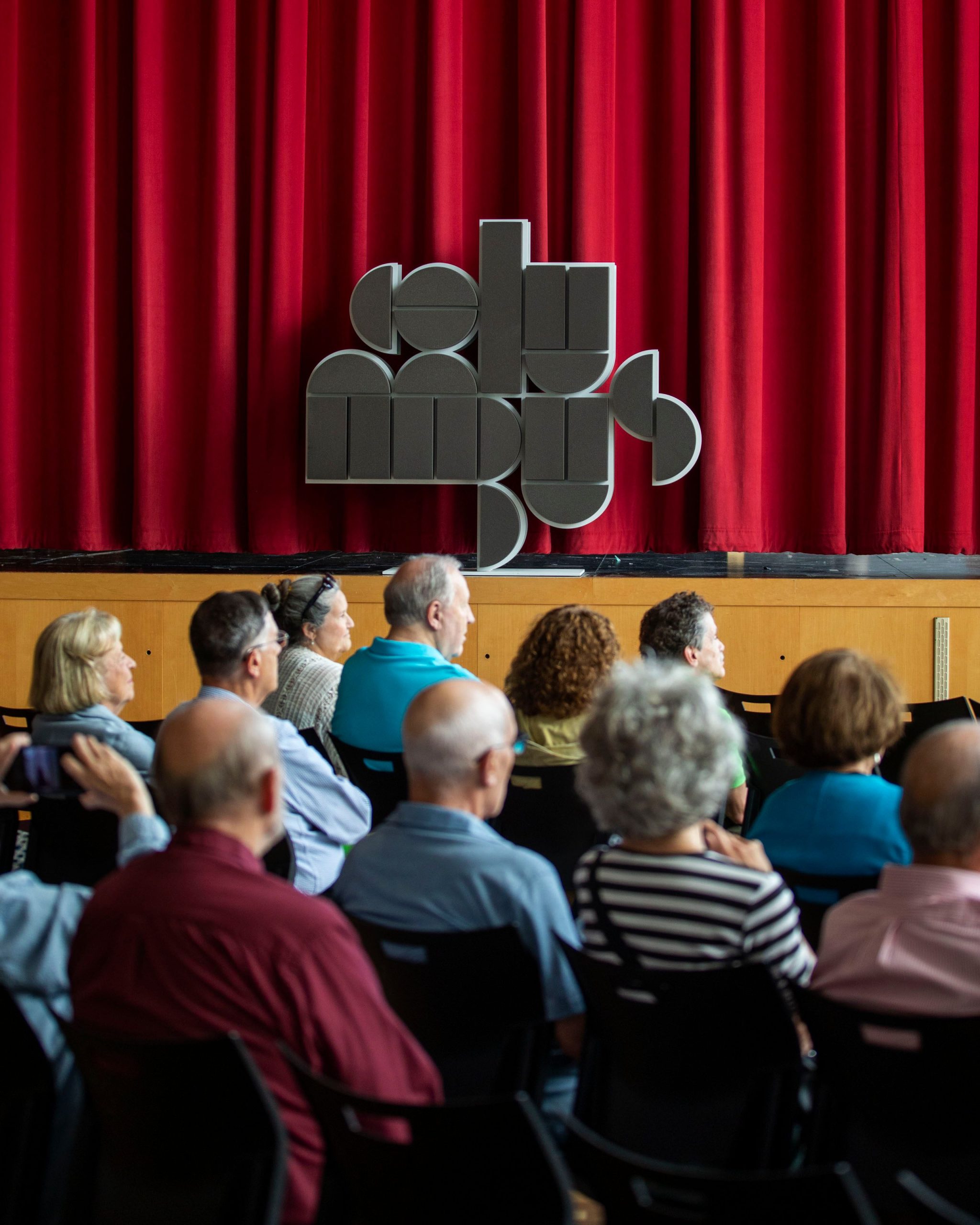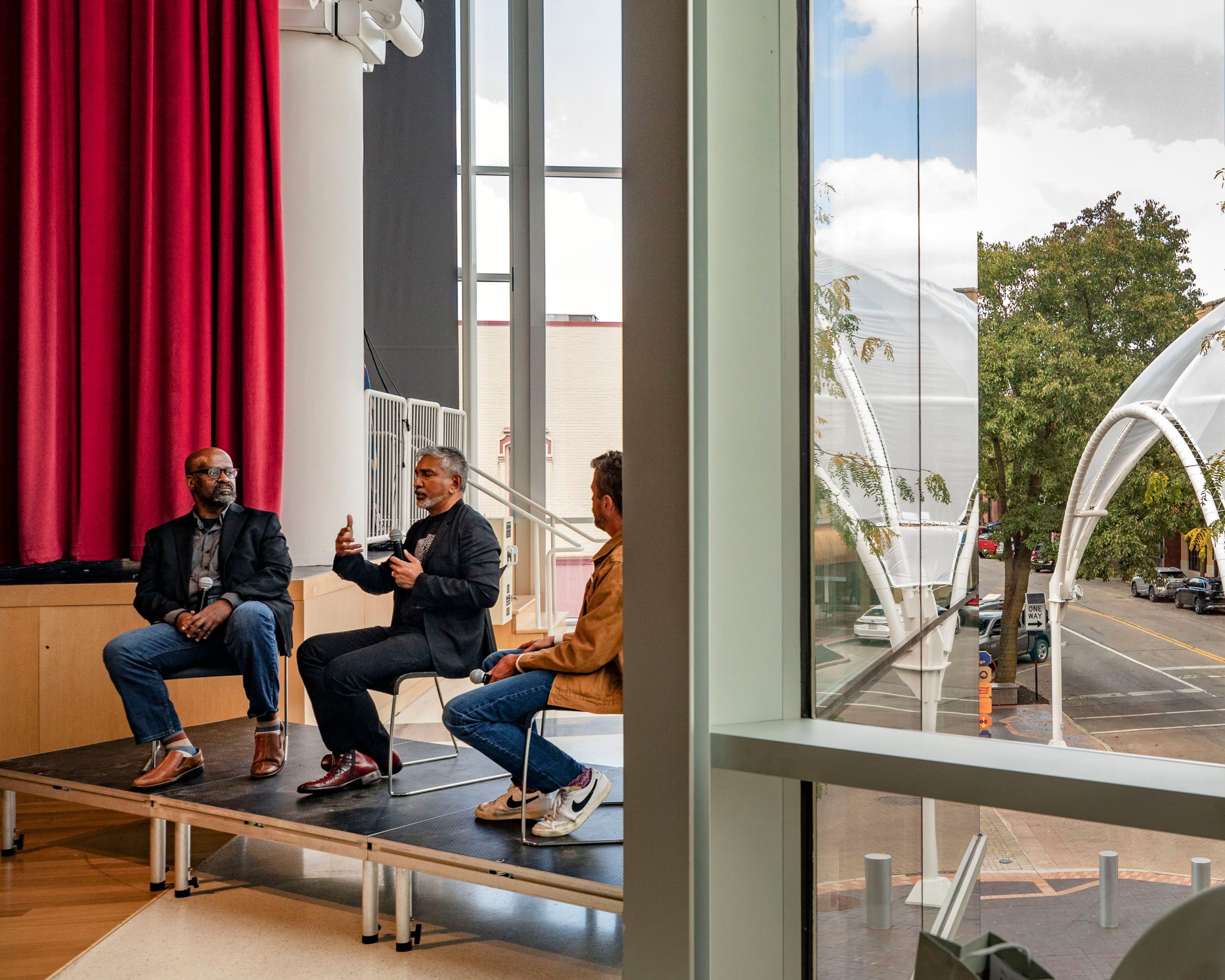
Mike Wolanin | The Republic Vishaan Chakrabarti, left, Founder and Creative Director of Practice for Architecture and Urbanism | PAU, and Ruchika Modi at PAU, dance during Exhibit Columbus’ Rock the Block party under Exhibit Columbus installation InterOculus on the opening weekend of Exhibit Columbus in Columbus, Ind., Saturday, Aug. 26, 2023. InterOculus was designed by PAU.
A downtown dome recently provided a crowning achievement for both a celebrated architect and the local organization that celebrates architects and their work.
So said designer Vishaan Chakrabarti and Richard McCoy Thursday at the second of four free gatherings of Exhibit Columbus architectural exhibition’s Miller Prize Conversations at The Commons.
Chakrabarti is with the New York City design firm Practice for Architecture and Urbanism, one of the Miller Prize designers in the local exhibition stretching through Nov. 26. McCoy is executive director of Landmark Columbus Foundation. The organization is the umbrella agency for Exhibit Columbus, the event echoing the city’s Modernist legacy with 13 installati0ns spun off some of Columbus’ most notable structures or landscapes.
McCoy hearkened to the Aug. 26 Exhibit Columbus street dance underneath the dome called InterOculus that attracted a pluralistic, partying throng that organizers felt blurred the lines of ethnic, occupational and other differences so much that Columbus residents such as Alice Gold mentioned it unprodded just days ago in an unrelated interview.
“It was maybe one of our best days ever with Exhibit Columbus,” McCoy said before a crowd of about 40 people at The Commons.
Chakrabarti’s face grew animated.
“I think it was one of OUR best days ever,” said Chakrabarti, who danced the night away with everyone else under his team’s creation of many alternating colors.
That comment referring to community unity was supported later in the hour-long discussion by Lee Bey, a friend and admirer of Chakrabarti’s work and also the Chicago Sun-Times’ architecture critic. Plus, he is author of the book “Southern Exposure: The Overlooked Architecture of Chicago’s South Side.”
“I believe that design has the ability to convene people who normally might not even be at the same table,” Bey said.
Chakrabarti agreed, and mentioned that his agreement on that idea marks a dramatic change from when he initially struggled to see 30 years ago how design could impact real world change.
“Good architecture helps to bring people together,” Chakrabarti said. “And we are not going to solve those problems of climate change and social inequity and the other weighty issues in our country if we can’t look each other in the eyeball in the space of a community. I sincerely believe that.”
Local spiritual leaders through the years such as Christine Lemley with Interfaith Forum of Columbus have repeatedly and publicly mentioned that basic idea to dissolve differences — or at least begin to examine them in an attempt to work toward residents’ mutual respect.
Chakrabarti also said that, now well into his career, he and his firm sees design as “less about objects and more about people.”
Near the end, the event also included Columbus Executive Director of Public Works Dave Hayward, also one of Exhibit Columbus’ community curators. He worked with Chakrabarti on InterOculus and recalled their first in-person discussion of apparent impossibilities during a meeting at Zaharakos.
“We looked at it, talked about it a little bit, and (initially) said, ‘We can’t do this,’” Hayward recalled.
But that soon changed. And Chakrabarti heaped praise on Hayward for making way for the installation.
“None of this happens,” the designer said, “without Dave.”












